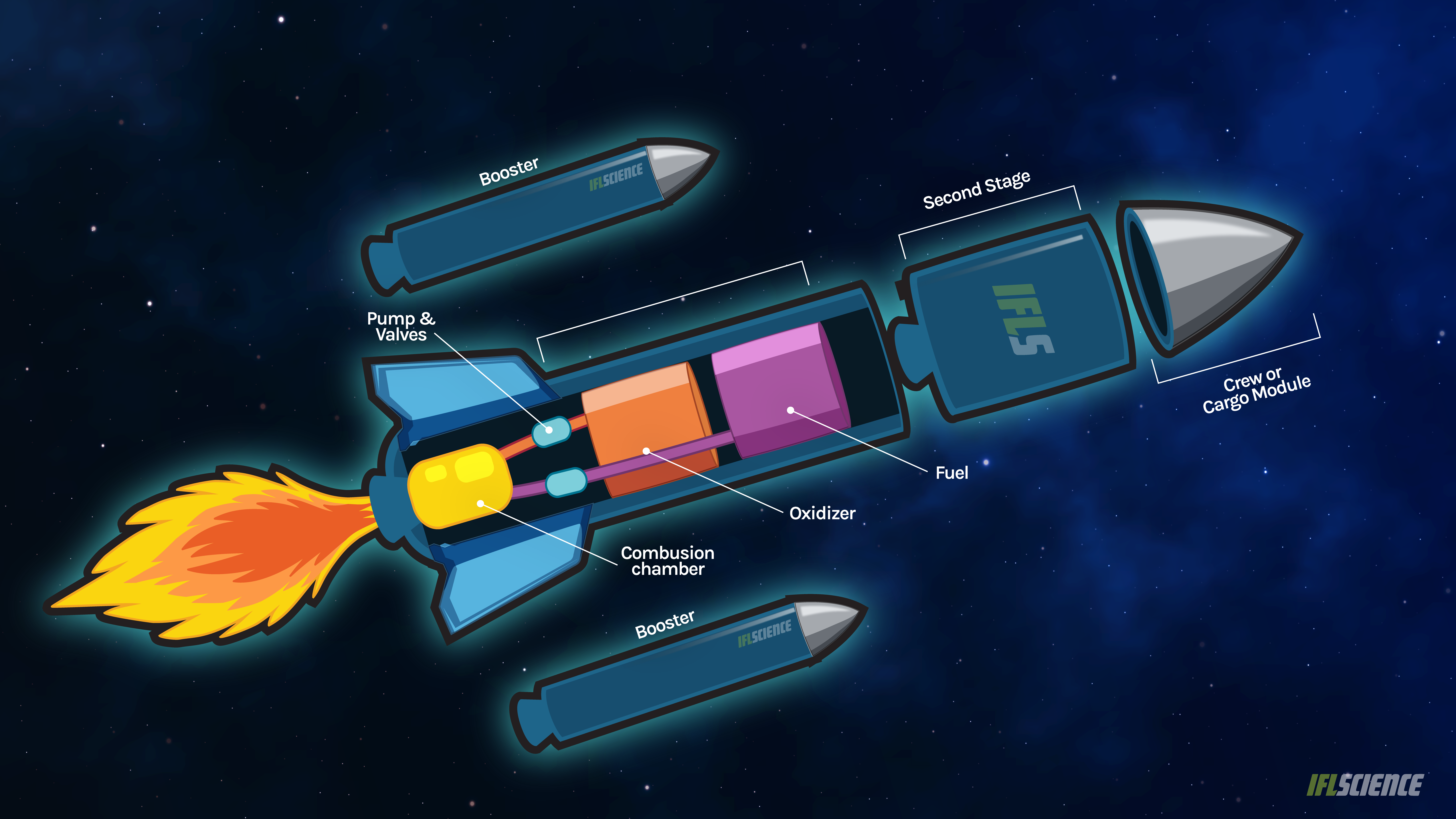In June 1944, the German V-2 rocket became the first object to ever reach space. Over the last eight decades, humans have experimented with several different designs to get stuff into orbit and launch ever further into deep space. With revolutionary rockets having been tested recently or imminently taking flight, it is important to understand how they work.
The principles of rocketry are actually cardinal ideas in physics, but it is their application that requires more thought. First of all, objects with mass tend to resist being put in motion, but once in motion, they will continue moving as long as there’s no friction or drag. We are talking about inertia here. And then there is Newton’s third law of motion: for every action, there is an equal and opposite reaction. Together, they form the theoretical base for any rocket launch.
How do rockets get to space?
Let’s start looking at the practicalities. To get up and into space you need to be moving fast. If it is a matter of crossing the Kármán line at 100 kilometers (61 miles) and coming back down, like Blue Origin’s New Shepard rocket, then you should be aiming for around 3,500 kilometers (2,200 miles) per hour. That is almost 1 kilometer per second.
But if your goal is to get into orbit and stay there, you need to get faster or you’ll fall back down. The way one stays in orbit is to be constantly falling back down toward Earth. You just keep missing the planet. The speed required to stay in low-Earth orbit is 8 kilometers (5 miles) per second.
To leave the Earth’s gravitational pull for good, you need to go even faster. At least 11.2 kilometers (7 miles) per second. That’s equivalent to 40,000 kilometers (25,000 miles) per hour.
How do rockets lift-off?
No matter what speed you want to reach, you need an object that can generate thrust. And lots of it. Thrust depends on the speed of the exhaust gas and the mass of gas being expelled per second. So we move from the principles of physics to the chemistry of explosions.

A schematic view of the components of a rocket.
Image Credit: James Rodriguez © IFLScience
Calling it the chemistry of fire or of controlled explosions is splitting hairs. In basic terms, it is an exothermic reaction, one that releases heat and energy. It’s what powers your cells. It’s what powers a fire. It’s what powers regular combustion engines. You have a fuel, you have an oxidizer, and an ignition source.
Rockets travel very high into the atmosphere, where the amount of oxygen (the oxidizer for all the other namechecked system use) is low. So rockets tend to bring their own oxidizers with them. Liquid oxygen tends to be the oxidizer of choice. But fuel varies. SpaceX’s Falcon rocket used rocket-grade Kerosene as fuel. SpaceX’s Starship instead uses methane. NASA’s Space Launch System (SLS) and the upcoming European Space Agency’s Ariane 6 both use liquid hydrogen as fuel.
A recent explainer video from the European Space Agency (ESA,) parallels the rocket behavior to that of an unknotted balloon. Pointing out the main difference, a balloon doesn’t just go up but it moves all over the place. The video makes another important analogy: balancing the rocket – thin and tall with the thrust coming out of the bottom – is like balancing a pencil on a finger. You need to be flexible.
How do you control a rocket?
The flexibility comes from having engine nozzles that can be moved, as well as other design elements such as fins. When a rocket begins to tumble uncontrollably, it usually means that those systems are not working and the rocket is either about to explode by itself or will be made to go boom by ground control.
Another common feature in rockets is boosters. Not every rocket design needs them, because not every rocket has to generate the same amount of thrust. Boosters such as those on SLS and Ariane 6 use solid fuel – the fuel and the oxidizer are combined in a solid block that burns and burns. There’s no way to regulate thrust when it comes to the boosters, beyond shaping the surface area where the reaction occurs.
The final salient characteristic of rockets is that they are usually built in stages. Going back to the principle of inertia, the more mass you have the more thrust you need to move it to the speed you want. But the more thrust you need, the more fuel you need to pack. So it is useful to get rid of a portion of the rocket once it has outlived its purpose. Some first stages are reusable, like in the case of SpaceX rockets. In other cases, it is only the capsule that carries cargo or crew that is used over and over again.
To make sure everything goes right, rockets are tested time and time again. There’s often a lot running on them – literally, when the mission they are launching is carrying astronauts. They do not call it rocket science for nothing.
Source Link: How Do Rockets Work? All You Need To Know